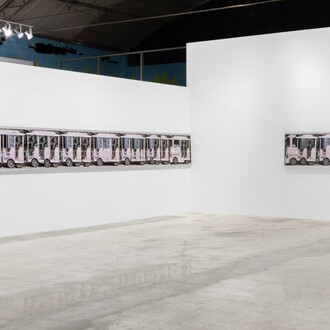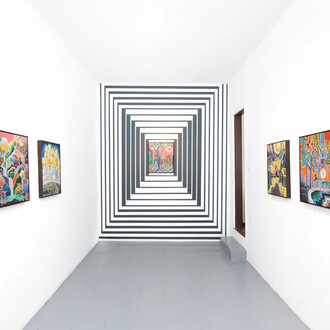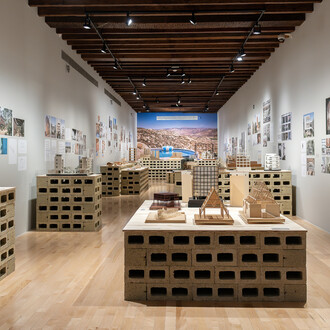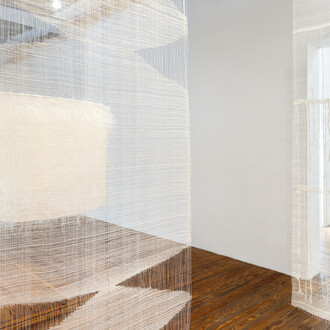Mácula is the first solo show by Ecuadorian artist Óscar Santillán in Mexico and in the American continent. It is a look back at some of the themes and procedures that recur in his work, including two earlier pieces and three brand new ones. The substrate unifying them all is a connection between scientific investigation and aesthetic ideas. The outcome of this combination is a robust and refreshing art at both the conceptual and formal level.
His work explores the way in which through a process of transformation it is possible for an object to become something new, a ghost-image. Two earlier works, Epílogo (2015) and Baneque (2016), deploy the ideas of alchemy and transformation. Invisible gestures and actions can produce new objects. This set of actions, procedures and objects establish a chain of previously hidden associations, unlikely or unexpected, but above all enigmatic.
Baneque, a water crystal, is the stronghold of the evaporation of salt water collected in the Atlantic Ocean, at the exact coordinates of a phantom island described in the charts of Christopher Columbus’s first voyage to the Americas, but never seen again. Meanwhile, in Epílogo, Santillán takes the writings of German philosopher Friedrich Nietzsche as the starting point. Using a scrap of typewritten paper belonging to the philosopher, and dance and the body—important aspects of his thought—Nietzsche is reinscribed in the present.
Questions of an epistemological character appear in Santillán’s work, questioning the way in which we construct knowledge in the West. This is the principal focus of one of his new works, Solaris (2016-2017), presented for the first time at this exhibition. Here, the artist seeks to understand the mechanism by which astronomical knowledge is produced through indirect observations (whether mechanical or mathematical) mediated by optical instruments and devices. The questioning of astronomy is not intended as a confrontation with science but rather as an aesthetic response; the result of this operation is both an instrument of observation and the images it produces. Three lenses created using sand from the Atacama desert adapted to fit photographic cameras produce blurred images of the same desert. A place that is one of the leading sites for astronomical observation, and where two of the most powerful telescopes built to date are located.
The artist’s work employs narrative mechanisms connected to literature and to myth, structures which make improbable structures possible. Taking this perspective, Enciclopedia Quemada (2016-2017), made from twelve tablets of burnt clay, deploys a non-linear narration that connects in textual and visual form the stories behind the exhibited works. Random events acquire meaning through this enigmatic narration. The material and form of this encyclopedia evoke the beginnings of written language and therefore of history. The title refers to encyclopedic thought and the basis for modern scientific thought, the form in which it is produced, organized and compiled.
Another unseen work, Vaciado (2017), continues the investigation into gestures and actions. In this case, Santillán’s starting point is a medical condition that has no conclusive scientific explanation: phantom limb syndrome, or phantom pain, experienced by people with amputations. By means of a performance, similar to a ritual, enacted by five performers and one person suffering from this condition, the missing limb appears symbolically and is housed in a wooden box. Following the same procedure as Epílogo, choreography and bodily movements are a way of making the ghostly condition of objects visible.
















